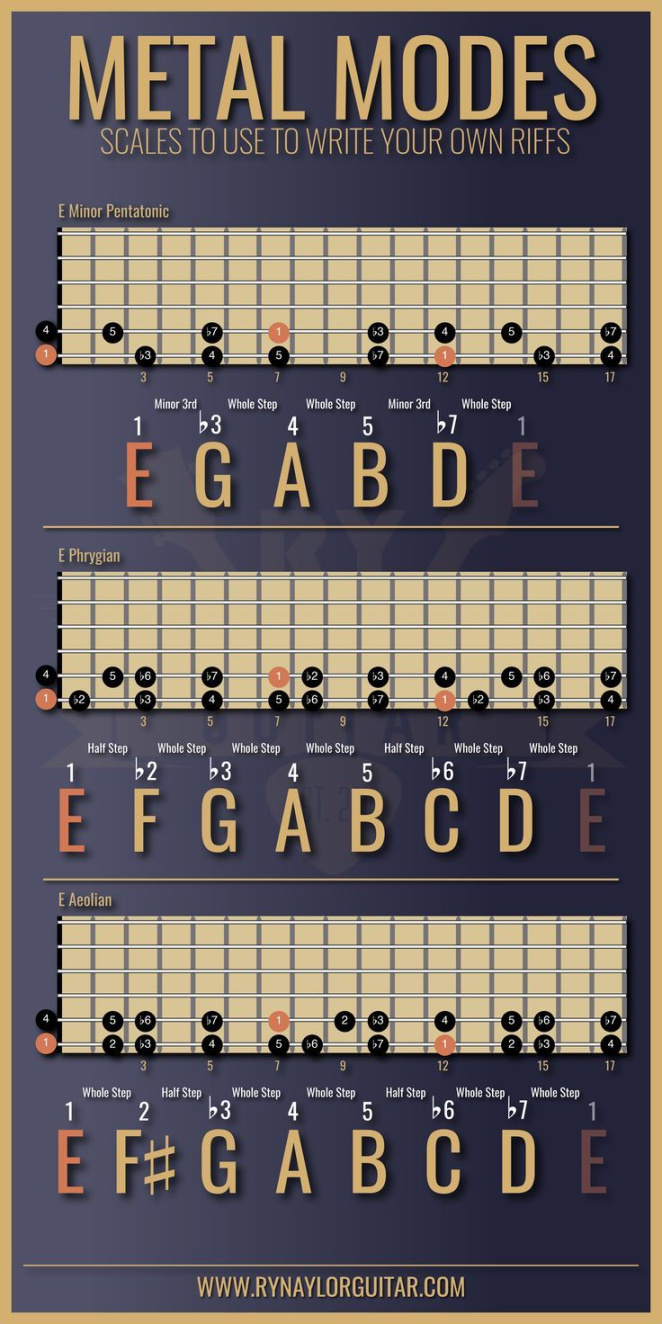Metal Guitar Chord Progressions: Unleash the Darkness
So, you want to write some metal riffs? Awesome. You’ve got your guitar, your amp is screaming, and you’re ready to dive into the fiery depths of metal. But where do you start with the chords? Forget your typical pop progressions; metal demands something darker, heavier, and more intense. Let’s break down some killer chord progressions that’ll have you headbanging in no time.
Power Chords: The Foundation of Metal
First things first, power chords. These are your bread and butter. Forget those fancy jazz chords for now. Power chords are simple, raw, and powerful. They’re built on the root, fifth, and sometimes an octave, and they sound massive with distortion. You’ll see them written as something like “A5,” “E5,” or “C#5.”
Why Power Chords?

Because they’re ambiguous. They lack a major or minor third, so you can throw them into any key and they’ll sound heavy. They’re also easy to play, which means you can focus on your rhythm and aggression.
Common Metal Chord Progressions
Let’s dive into some progressions you’ll hear in countless metal songs.
I-VI-IV-V: The Classic Heavy Progression
This one’s a staple, but in metal, we crank it up. Think of it in E: E5-C#5-A5-B5. It’s got that driving, relentless feel. You can drop it down a half step to Eb5-C5-Ab5-Bb5 for a darker vibe.
i-VI-III-VII: The Minor Powerhouse
When you want to go full-on dark, this is your go-to. In A minor: Am5-F5-C5-G5. This progression has that epic, almost doom-laden quality. It’s the sound of a battle scene in a fantasy movie.
i-VII-VI-V: The Descending Darkness
This progression descends, creating a sense of dread and inevitability. In E minor: Em5-D5-C5-B5. It’s perfect for those slow, crushing riffs that build tension.
i-iv-V-i: The Cyclic Doom
Another minor progression, but this one has a more cyclic, repetitive feel, great for creating a hypnotic atmosphere. In C minor: Cm5-Fm5-G5-Cm5. The iv chord adds a touch of melancholy.
Adding Flavor: Variations and Extensions
Now, let’s spice things up.
Using Seventh Chords
You can add a minor seventh to your power chords for a darker, more dissonant sound. Think Em7(5), or Am7(5). It adds a layer of depth and unease.
Drop Tuning: The Low-End Rumble
Drop tuning, like drop D or drop C, allows you to play lower, heavier riffs. This is essential for modern metal. In drop D, your low E string is tuned down to D, making power chords even easier to play and adding a massive low-end punch.
Palm Muting: The Percussive Edge
Palm muting is a technique where you rest the side of your picking hand on the strings near the bridge. It creates a tight, percussive sound that’s essential for metal rhythm guitar. It adds a chugging, aggressive feel to your riffs.
Syncopation: The Rhythmic Complexity
Don’t just play straight quarter notes. Add syncopation by playing off the beat. This creates a sense of tension and rhythmic complexity that’s crucial for metal. Think of bands like Meshuggah or Gojira, who excel at complex rhythmic patterns.
Tempo Changes: The Dynamic Shift
Changing the tempo in your progressions can add a lot of dynamics. Start slow and heavy, then speed up for a thrashy section. Or go from fast and furious to a slow, crushing breakdown. It’s all about keeping the listener engaged.
Practical Examples and Tips
Experiment with different keys: Don’t just stick to E or A. Try playing in less common keys like B or F#.
Conclusion
Metal chord progressions are all about creating a dark, powerful, and intense atmosphere. By mastering power chords, understanding common progressions, and experimenting with variations and techniques, you can craft riffs that will resonate with any metal fan. Remember, it’s not just about the chords themselves, but how you play them. Focus on your rhythm, dynamics, and aggression. Don’t be afraid to experiment and find your own unique voice. With practice and dedication, you’ll be writing killer metal riffs in no time. So grab your guitar, crank up the distortion, and unleash the darkness.

